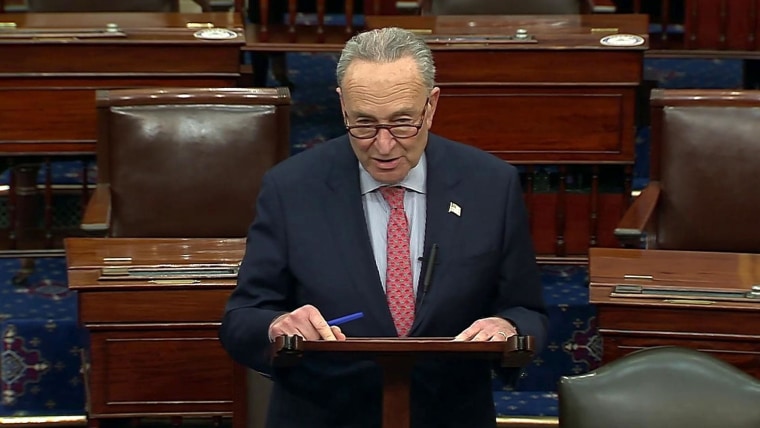When Hawaii’s Covid-19 shutdown order took effect last year, Cynthia Merrick’s Oahu-based fitness business all but dried up. Tomoko Otani lost her job at a Honolulu-area restaurant. Facing sudden financial challenges, from applying for unemployment benefits in a second language to possible eviction, they turned to the Legal Aid Society of Hawaii.
Merrick and Otani were among thousands of people the legal aid group helped in the first few months of the pandemic. With so much of its economy dependent on tourism, Hawaii saw the largest increase in unemployment of any state last year and its unemployment system was plagued with phone backlogs and other delays, some still happening even a year into the pandemic.
For the Legal Aid Society of Hawaii, which provides legal advice and representation as well as assistance on benefits applications for the state’s low-income population, the pandemic meant a massive increase in clients.
“Our practice for unemployment went from almost zero to hundreds of cases and hundreds of inquiries,” said Nalani Fujimori Kaina, the society’s executive director.
But the screeching halt of the economy threw the organization’s own finances into trouble.
The several hundred legal aid organizations around the country help the poorest Americans deal with challenges from eviction and unemployment to domestic violence and medical debt. Even before the pandemic, there was not enough funding for these groups to meet the needs of the 57 million Americans who qualified for their services, recent studies show. With demand now rising as court proceedings begin to resume, legal aid groups say they should be adding attorneys, but instead are scrambling to fill budget gaps and trying to dodge staff cuts.
More than $2 billion went to legal aid in 2019, from nearly a dozen different kinds of public and private sources. The biggest is the federal government. The first federal stimulus package in March 2020 included some emergency funds specifically for legal aid organizations, but there has been no additional relief money for the Hawaii society or the 131 other legal aid groups that receive funding from Congress, despite two more Covid-19 stimulus packages.
State legislatures also provide substantial funding, but some, facing budget gaps during the pandemic, have slashed their legal aid funding.
A third pot of money comes from a complicated system of state funds that uses interest payments to bankroll legal aid. Those payments plummeted during the pandemic, however, as the effective interest rate dropped to zero.
Meanwhile, millions of additional people have fallen into poverty, and requests for aid, particularly on housing and unemployment issues, have skyrocketed for legal aid groups around the U.S.
“If we don’t pick up some of the Covid funding that we think is out there for us, by the end of the year, we’d probably be in a layoff mode,” said Paul Furrh, CEO of Lone Star Legal Aid, one of the largest legal aid providers in the country. Its 200 attorneys serving the eastern third of Texas have their hands full dealing with the impact of the pandemic and the region’s February winter storm.
“Hopefully that’s not going to happen,” he said. “But I can’t guarantee we’re going to get those funds.”
Representation not guaranteed
Legal aid organizations fill a crucial need in the American court system. Legal representation by a public defender in criminal cases is a constitutional right, but unlike many countries, in civil cases representation is not guaranteed. Yet many of the issues that bring people to civil courts around the country — like debt and consumer scams — disproportionately affect the poor, and studies have shown having even a small amount of legal assistance can dramatically improve clients’ case outcomes.
Congress began funding free legal help for the poorest Americans in the 1960s, and created a national nonprofit, the Legal Services Corporation, to distribute that money to local organizations in 1974. But that system has never had anywhere close to enough money to meet the need, and over time, federal appropriations have stagnated or been cut, resulting in less funding, adjusted for inflation, than when the tap was turned on.
The qualification for most legal aid services is an income 125 percent of the poverty line or less — roughly $16,000 for an individual and $33,125 for a family of four. Before the pandemic, that was an estimated 57 million Americans.
State-level studies from the past decade show the vast majority of legal aid needs go unmet — in Massachusetts they turn away 64 percent of cases, in New York and Texas less than 20 percent of qualified cases receive any legal assistance. A 2017 study commissioned by Legal Services Corporation found surveyed legal aid groups were only able to fully meet the needs of half of the more than 1 million people they helped that year, due largely to limited resources.
It was already a dire situation, said Legal Services Corporation President Ron Flagg, but the pandemic has created “substantial increases in the number of people who qualify for civil legal aid and a surge in the [problems] facing those people.”
It’s too soon for data on just how much need has grown, but the number of people who qualified for civil legal aid increased more than 17 percent, between 2008 and 2012, during the last recession. Looking at 2020’s unemployment figures, Flagg expects the number this time to be “much greater.”
“More people are falling into poverty. They’re facing unemployment claims they didn’t face before, they’re facing evictions they didn’t face before, they’re facing domestic violence cases they didn’t before, and healthcare issues,” he said.
Flagg’s organization, which gets its budget from Congress every year, is the single biggest legal aid funder in the country, providing roughly one-third of the budget for the 132 nonprofits it funds around the country. This year, the group is asking Congress for more than double its annual allocation — just over $1 billion — but won’t get any increase, if approved, until Oct. 1 at the earliest.
Its budget went up by $25 million last year and it received $50 million in the March 2020 stimulus package — both increases were half or less of the organization’s request. LSC has gotten no additional relief money during the pandemic.
Asking Congress
Congressional legal aid funding is tiny on the scale of money going to Covid-19 relief. In the most recent, $1.9 trillion stimulus bill, $45 billion went specifically to housing assistance and $163 billion to extend unemployment benefits. LSC asked for $350 to $500 million — 0.02 percent of the total bill. In the end, the organization got no money at all from the bill because of a technicality.
LSC’s funding request didn’t make it into the rushed second stimulus last fall either. The House passed a bill with $100 million in legal aid funding included, but it was missing from the stripped down Senate bill, passed at the 11th hour, the version that ultimately became law.
The organization is trying two more ways to get pandemic relief money for legal aid groups – asking to be included in the massive infrastructure bill President Joe Biden announced last month, and doubling its annual budget request.
There’s bipartisan support for legal aid — though President Donald Trump proposed eliminating legal aid from the federal budget the first three years of his term, Congress declined to do so, instead increasing LSC’s funding each time. But having missed out on the two most recent stimulus packages, more money for the organization could be a long time coming.
In the meantime, legal aid providers are already feeling budget losses from other funding sources.
Multiple funding sources
Most legal aid organizations get funding from a variety of sources. Federal funding was cut dramatically under President Ronald Reagan, just a few years after the program began. Several other major funding streams emerged in response, including from other parts of the legal system. But the pandemic threw many of them into crisis.
One substantial funding source is the interest earned from the bank accounts lawyers use to receive and transfer funds to and from clients, known as lawyers’ trust accounts. The interest adds up over time to as much as several hundred million dollars annually and every state has an organization that distributes those funds to legal aid groups.
IOLTA, as it’s known, has a drawback, though. When the Federal Reserve drops effective interest rates during a recession, income from these accounts plummets. During the 2008 recession, total IOLTA funding dropped by more than half in just one year, and continued to decline for years. Before then, it had been one of the three largest legal aid funding sources. It had yet to rebound to pre-recession levels when the pandemic hit, according to the National Association of IOLTA Programs (NAIP), the network of state legal aid funding programs.
State funding programs saw funding fall nearly in half in 2020, dropping $111 million from 2019 levels, according to a December NAIP survey of the majority of its members. At least one state lost 75 percent of its ILOTA revenue last year.
The Federal Reserve forecasts interest rates will remain near zero through at least 2023, meaning a “significant drop in income for the next several years,” said Chris O’Malley, executive director of New York’s Interest on Lawyer Account Fund, one of the largest in the nation.
“Nationwide, it’s going to result in the reduction of attorneys available at a time when the need is going to be greater than ever,” he said. “It’s all kind of teeing up a sort of worst-case scenario.”
State governments and foundations provide another significant portion of legal aid funding, as do court filing fees and attorney fees. Some state legislatures facing budget deficits have already made significant cuts to legal aid funding or are weighing cuts.
Funds from court filing and attorney fees come in as cases are filed and judges make rulings. At the start of the pandemic, however, court proceedings ground to a halt, then moving online at reduced capacities. State funding programs saw a nearly one-quarter drop in court filing revenue last year.
The future
Some legal aid groups will feel the effects sooner than others. Many legislatures approve budgets on two-year cycles, so the impacts of the pandemic may only just be hitting state budgeting.
Not so in Hawaii. The funding for the legal aid society there was cut by $623,000, roughly one third of its annual allocation, in the state’s 2020 budget, which took effect in July. None of that money came back this year. Instead the state, grappling with a more than $1 billion budget deficit, plans to cut an additional $100,000 of the organization’s funding. The group is also expecting a substantial decrease from the $500,000 it gets annually from court filing fees. All together, it could be facing a more than 10 percent budget cut — equivalent to 600 fewer cases and 10 fewer employees.
It filled its funding gap last year with the initial federal relief money distributed by LSC and money from local foundations. Additional federal money is unlikely to arrive before the next budget cycle begins, so the group is working to fill its current gap other ways, including through additional foundation and government grant programs, said Fujimori Kaina, the executive director. They won’t know the final impact of funding losses until the budget is finalized in May or June, but more federal money could make all the difference.
“That money is still needed as things change — as proclamations change, as the eviction tsunami we all talk about is coming,” she said. “For us, it’s about the future. What does it look like in the future when we know that demand is going to continue and we still need to help families recover?”





More Stories
Personal Injury Law Firms | 4 Secret Tools to Increase Productivity
Telling the story that defies telling — BuzzMachine
Kanye West Deal to Buy Parler Is off, by Mutual Decision – RedState